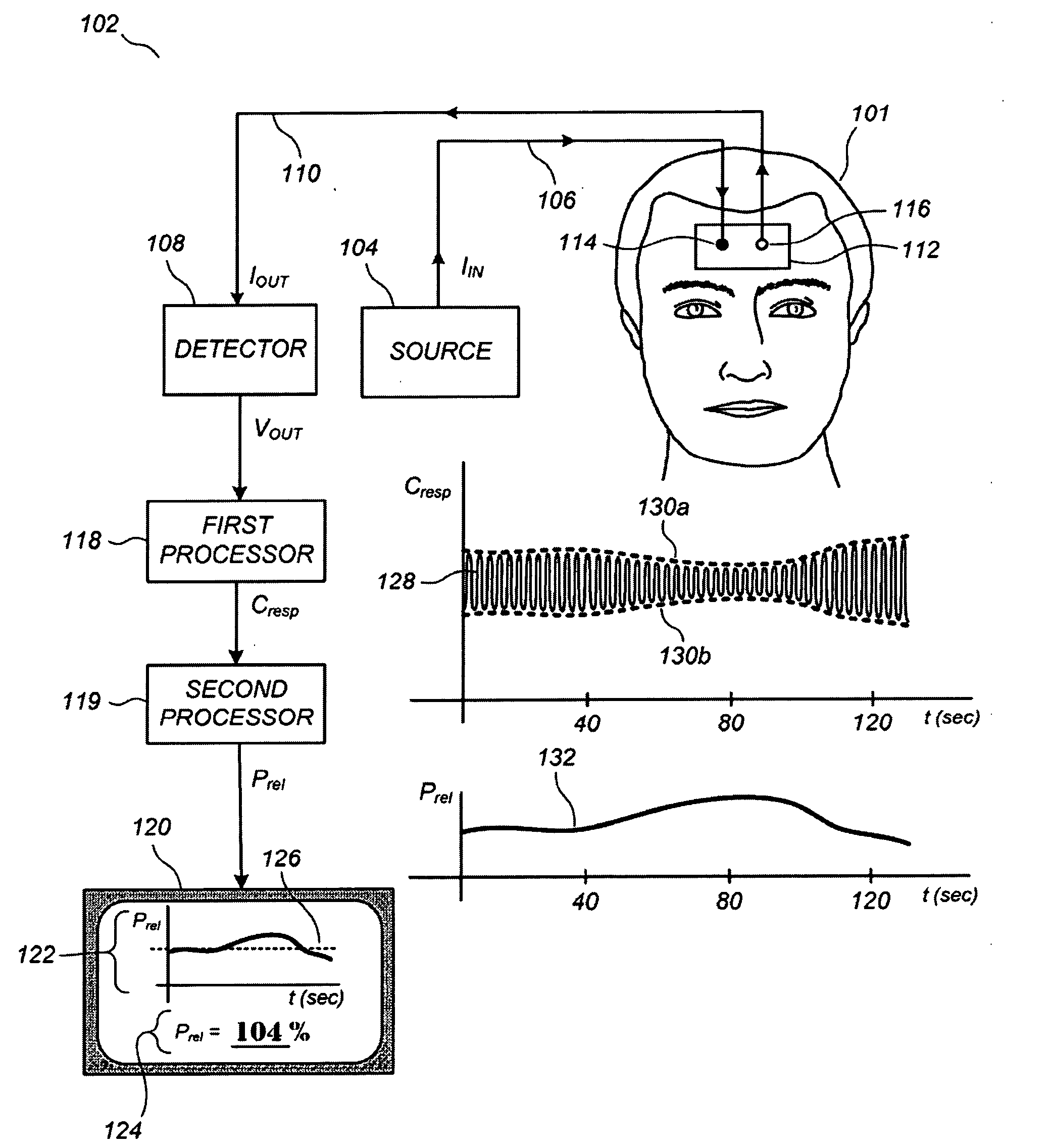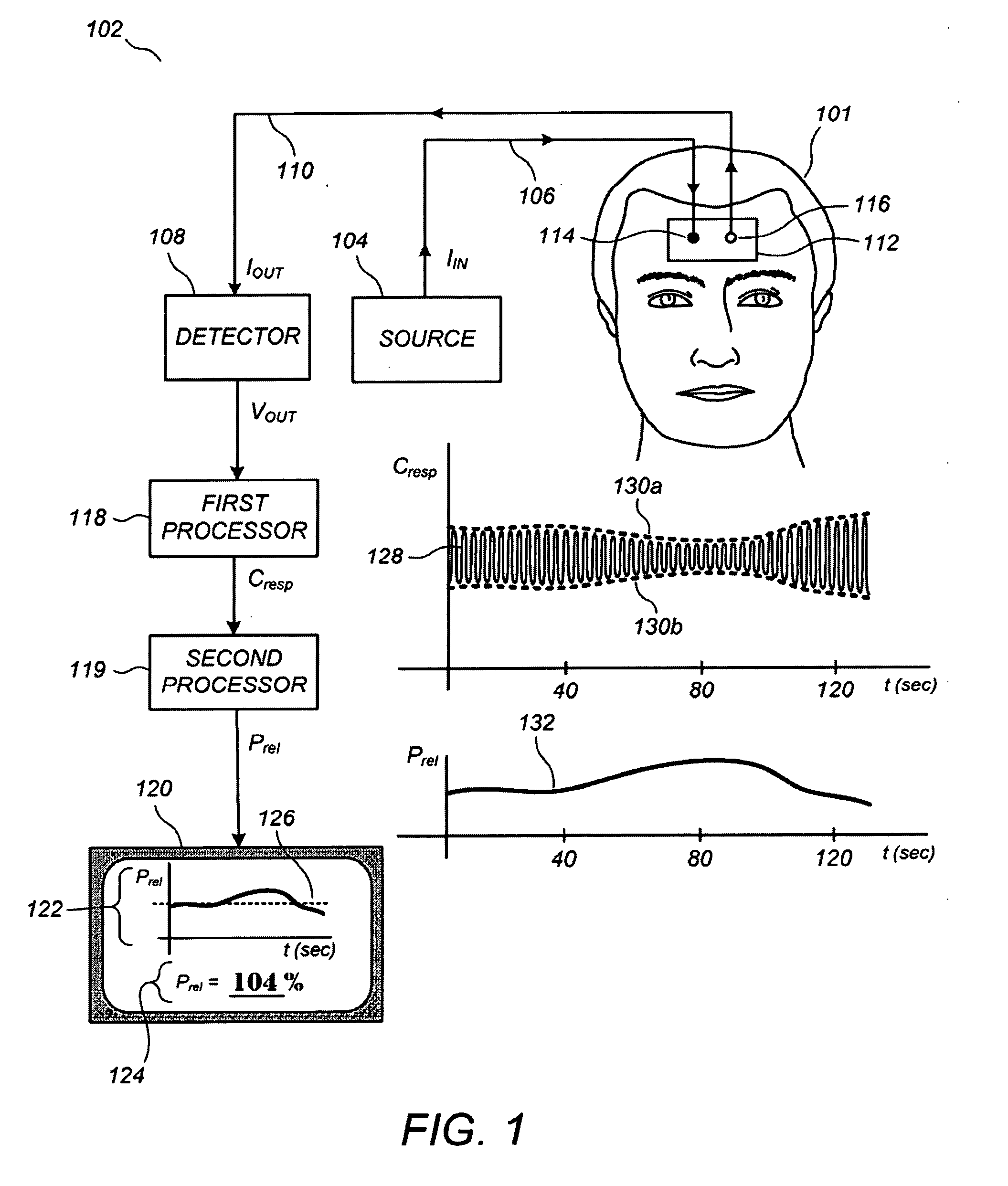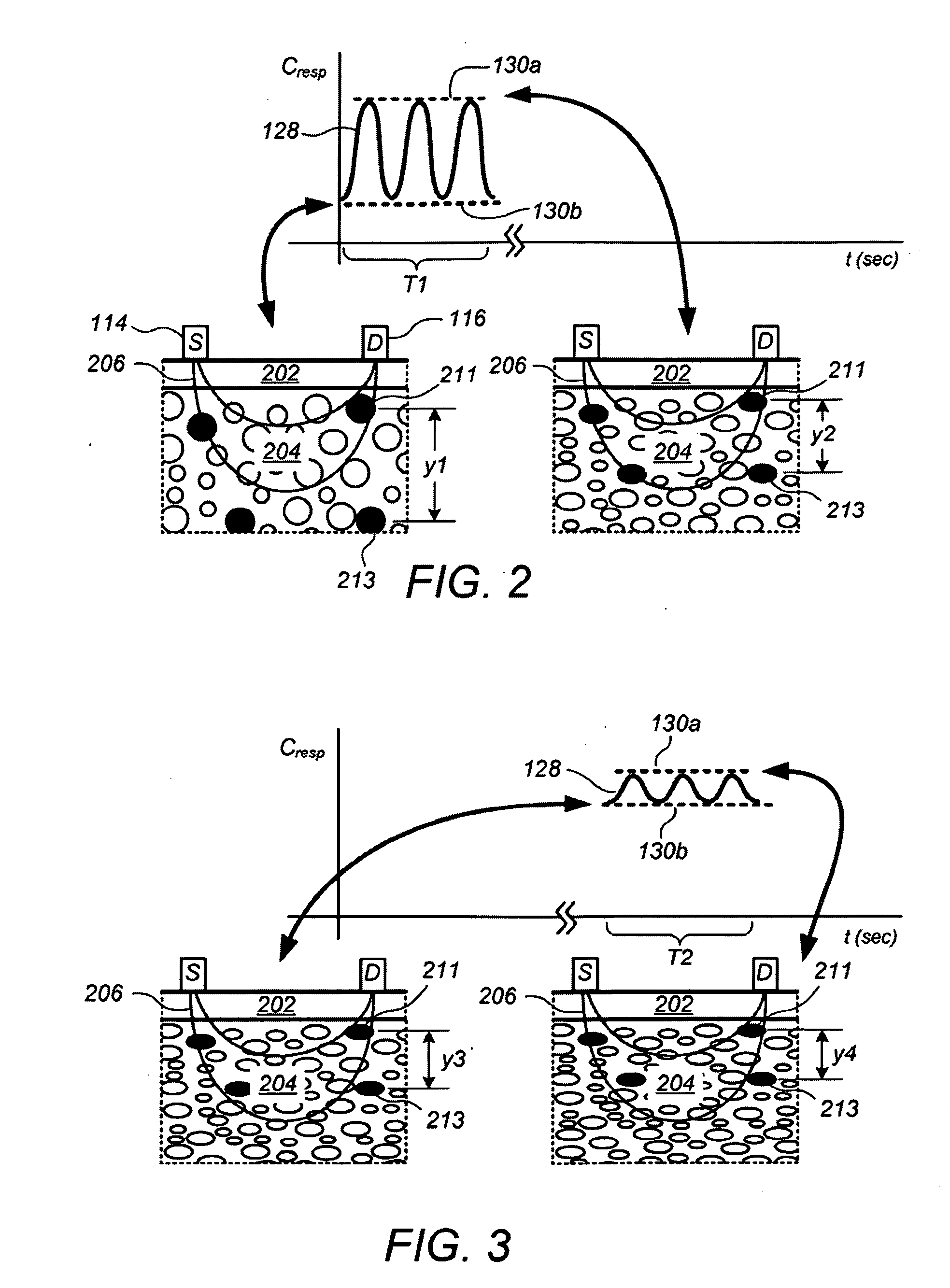Non-invasive monitoring of intracranial pressure
a non-invasive monitoring and intracranial pressure technology, applied in the field of non-invasive monitoring of intracranial pressure, can solve the problems of severe harm, between 25 and 30 mm hg are usually fatal, and the elevated icp level is generally undesirabl
- Summary
- Abstract
- Description
- Claims
- Application Information
AI Technical Summary
Benefits of technology
Problems solved by technology
Method used
Image
Examples
Embodiment Construction
[0014]FIG. 1 illustrates a system 102 for non-invasive monitoring of intracranial pressure (ICP) variations of a patient 101 according to a preferred embodiment. Spectrophotometric systems based on visible and / or near infrared (NIR) radiation for achieving various non-invasive physiological measurements, such as transcranial measurements of oxygenated hemoglobin (HbO) and deoxygenated hemoglobin (Hb) concentrations, have been in various stages of proposal and development for an appreciable number of years. As will be appreciated by one skilled in the art in view of the present disclosure, certain component devices suitable for use within the system 102 are described in several prior disclosures directed to such non-invasive optical HbO / Hb measurement, and their specifics will not be re-described here. Moreover, several of those overall spectrophotometric systems and methods may be advantageously used in conjunction with, or as important components within, a system 102 according to o...
PUM
 Login to View More
Login to View More Abstract
Description
Claims
Application Information
 Login to View More
Login to View More - R&D
- Intellectual Property
- Life Sciences
- Materials
- Tech Scout
- Unparalleled Data Quality
- Higher Quality Content
- 60% Fewer Hallucinations
Browse by: Latest US Patents, China's latest patents, Technical Efficacy Thesaurus, Application Domain, Technology Topic, Popular Technical Reports.
© 2025 PatSnap. All rights reserved.Legal|Privacy policy|Modern Slavery Act Transparency Statement|Sitemap|About US| Contact US: help@patsnap.com



